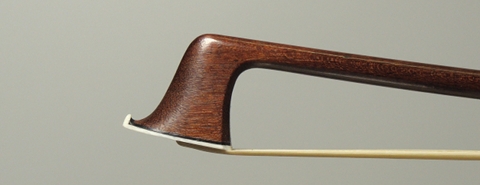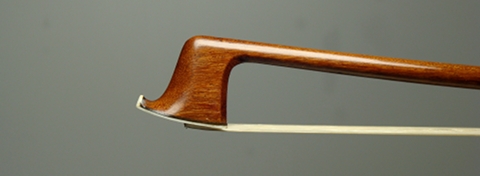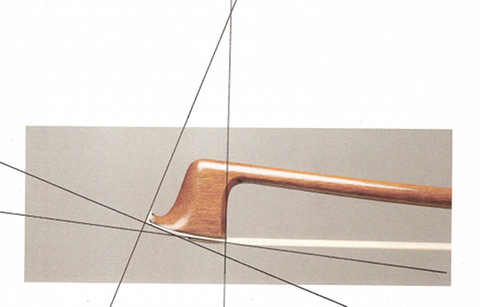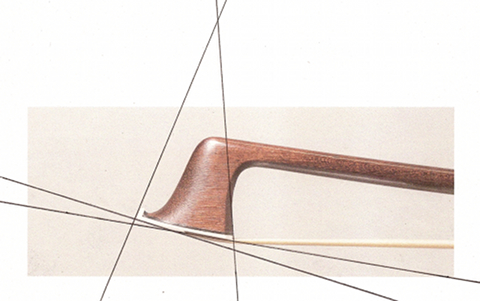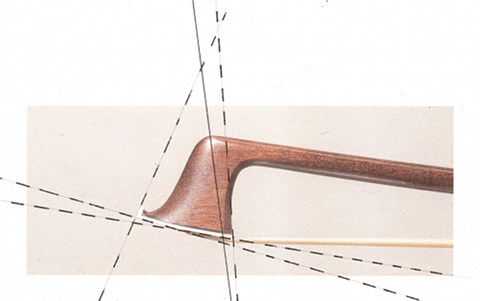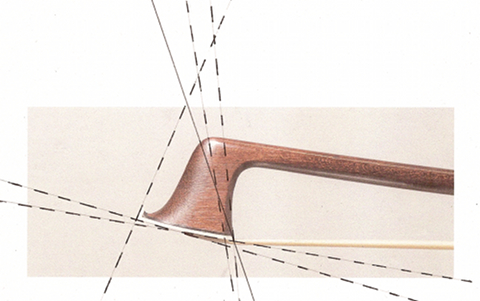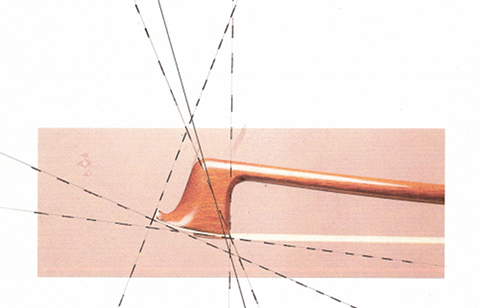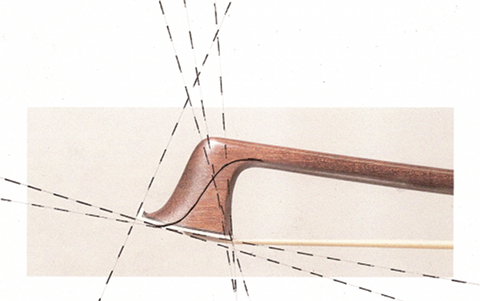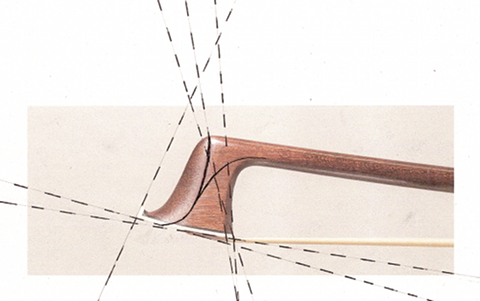JEAN PIERRE MARIE PERSOIT AND THE THOUSAND ILLUSIONSWhen I refer to Persoit, I often name him as a genius, and for a reason. Now what is it that distinguish a brilliant craftsman from a genius?
Violin bow by Jean Pierre Marie Persoit 1820 ca. With the exceptions of Francois Xavier Tourte and Etienne Pajeot; all other craftsmen, good craftsmen, sublime or mediocre being, limited themselves to improve their model, repeating it in every bow ever after. A classic example is Dominique Peccatte; you can recognize his bows not only for the impetuosity but also because he used the same model as a reference during his whole career. It is very simple. You can only view the bow head when it is finished – until that point it doesn't exist. The craftsmen draw the bow head and when they have achieved the desired shape they begin to copy it in the wood. Then as my colleague Master Naves Vera says, when you have repeated ad nauseam the model you have drawn, it will be transmitted in your model. Francois Xavier Tourte, Etienne Pajeot but indeed Persoit visualised the bow head in the wood and started to work without drawing it first. The proof is that there doesn't exist two equal heads – furthermore none ugly nor ungraceful. They are all harmonious and light even though diametrically opposite. Let us try to compare todays bow head with the bow head analysed last week.
Violin bow by Persoit “The Smile” 1820/25 Even without the drawn lines it is clear that the two bow heads are different one from the other. There is though one thing they have in common – lightness. The problem with the antique heads consisted in harmonizing the geometries which were dictated by the mechanic needs. All craftsmen worthy of note have found their own solution to the problem proposing it then in all their bows. A part from Persoit, he was too creative and every time he resolved the problem in a new way. You just need to observe the supporting lines on these two bow heads.
Supporting lines Persoit “The Smile” Whereas in the first case the line of the chamfer is upright, to the parallel line along the ivory tip and makes a very tight opposite angle. In the second case the chamfer line tilts visibly forward. This is because in the first case the wedge is quite pronounced in forward and Persoit then had to offset in the other direction.
In the second case you find the wedge slipped backwards, this time because of the necessity to offset the front and leave movement to the shape.
We will now concentrate on the triangular line. Whereas on the previous bow this particular line is hidden, on this bow head the triangular line is supporting. Thanks to the chamfer which is exaggeratedly open at its arrival, the line becomes a perfect closing to the wedge and highlights the central part of the head. Something is missing though.
It is fine that the supporting lines are oriented forward. One is missing to balance it all though. If you observe the bow head, it is as if someone has forced in a pin from the upper part to then pull the chamfer backwards as a drawer. To accentuate this effect there is then the arrival of the wedge onto the ivory tip, which doesn't quite come out enough and leaves the impression to be pulled back. This is why the chamfer is so wide; he needed it as a definitive support to project the bow head forward. The hidden projecting line, starts from the internal chamfer base and comes out on the wedge a little lower than on the previous bow head. Now observe the supporting triangle which I have just described and confront it with the triangle formed by the same lines on the other bow.
Projecting line Persoit “The Smile” 1820/25 So different, though so alike – incredible. As the most natural thing in the world Persoit has made two completely different bow heads succeeding in obtaining the same lightness and an identical direction.
The curve of the chamfer and the curve of the throat is obviously in perfect relation. The “s” shape of this line is slightly less stretched out than the same line on the other bow head. This is because the chamfer enters more and therefore has a wider circumference.
Just like in the other case, the “s”- shape bifurcates into a “y”- shape, which then connects with the outlet of the external line of the chamfer forming the evidenced triangle. Having a more slipped wedge the curve is less pronounced; in fact it is almost straight. As the fact that Persoit never made two equal bow heads, and at the time bow makers didn't have all that time to draw, means that He has made what the lines shows without having ever seen it. Usually bow makers at all levels obtain such a fluidity in the movement after having made hundreds of bow heads of the same model. In spite he constantly changed the model there is harmony and fluidity in everyone of his bow heads. As I said, simply a genius. To read more about this topic: PECCATTE, SARTORY AND THE GEOMETRIES FRANCOIS XAVIER TOURTE 1820/25 DOMINIQUE PECCATTE; THE PURE ONE So long, Paolo
|
   |






